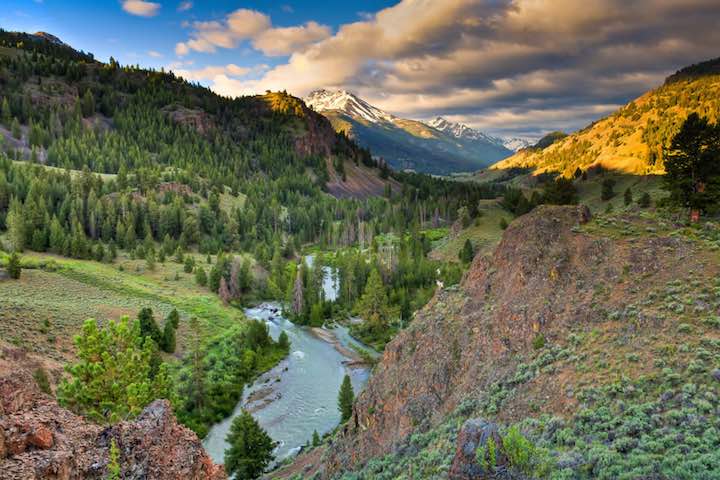forum
library
tutorial
contact

Feds Suspend Grazing
on East Fork Salmon
by Greg Moore
Idaho Mountain Express, July 12, 2017
|
the film forum library tutorial contact |

|
Feds Suspend Grazing
by Greg Moore
|
Forest Service agrees to consult with U.S. Fish and Wildlife Service
 In response to a lawsuit filed by the Hailey-based Western Watersheds Project, the U.S. Forest Service has agreed to suspend livestock grazing in the upper East Fork Salmon area for two years while it assesses the impacts of grazing there on salmon, steelhead and bull trout.
In response to a lawsuit filed by the Hailey-based Western Watersheds Project, the U.S. Forest Service has agreed to suspend livestock grazing in the upper East Fork Salmon area for two years while it assesses the impacts of grazing there on salmon, steelhead and bull trout.
"The upper East Fork of the Salmon contains critically important spawning habitat for trout and salmon, but cattle were degrading the health of the watershed with their heavy impacts along stream corridors," said Kristin Ruether, senior attorney with Western Watersheds Project. "We're delighted we've gained at least two years of rest for these sensitive spawning streams from the impacts of livestock grazing."
The actions are part of a July 3 settlement agreement reached between the two parties to resolve the lawsuit, filed last October in U.S. District Court in Boise. The suit asked the court to vacate 10-year grazing permits reissued in 2012 and 2013 for four permitees on the Upper and Lower East Fork allotments. The area covers about 100 square miles on the east side of the White Cloud Mountains in the Sawtooth National Recreation Area. The suit alleged that the Forest Service has allowed permitees to violate environmental laws and the Sawtooth National Forest plan for at least 13 years.
The settlement requires the Forest Service to reinitiate consultations with the U.S. Fish and Wildlife Service and NOAA Fisheries on the impacts of grazing on the spawning areas of the three fish species, all of which are listed under the Endangered Species Act. The Forest Service must then determine whether a supplement to a 2003 environmental impact statement on grazing there is warranted, and whether grazing permits should be canceled or modified to be consistent with SNRA requirements and the Endangered Species Act.
"Under the law, science comes first in decision making when it comes to threatened and endangered species, and when the Forest Service itself identifies serious problems, it must act to fix them," said Laurie Rule, senior staff attorney with Advocates for the West, a Boise-based environmental law firm that filed the suit on behalf of Western Watersheds Project. "We're confident that this settlement will address the serious environmental problems that prompted the lawsuit in the first place."
Sawtooth National Recreation Area Ranger Kirk Flannigan said in an interview that he decided to settle the matter because he thought a cooperative solution would be better than one resulting from the legal case. He said the Forest Service is working with the permittees, Western Watersheds Project and the federal agencies to create a grazing management system that meets forest plan standards regarding fish habitat.
"To the extent that we can be, everybody's on the same page," he said.
Flannigan acknowledged that grazing on the allotments had "on occasion" violated environmental laws, though he said it had not done so regularly.
The settlement also requires the Forest Service to reimburse Western Watersheds Project for $35,000 in attorney fees.
Related Pages:
Pole Creek Gets More Conservation Protection by Greg Moore, Idaho Mountain Express, 10/14/16
In Upper Salmon, A Project for Fish by Greg Moore, Idaho Mountain Express, 4/23/14
learn more on topics covered in the film
see the video
read the script
learn the songs
discussion forum
